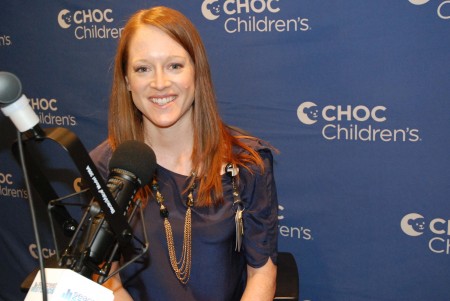SIGNS AND SYMPTOMS
A food allergy usually occurs in the first two years of life, says Dr. Ellis, a CHOC Allergy and Immunology Specialist. “It’s important to know that allergic reactions to food typically occur immediately or within two hours of eating the food,” Dr. Ellis explains. “The child might have skin issues like hives (itchy red spots) or develop itchy skin, or the child might throw up. All the organ systems can be involved. The child might wheeze or become short of breath. In severe cases, the cardiovascular system can be involved and the child could have a drop in blood pressure, feel light headed and faint.”
MANAGING FOOD ALLERGIES
There is no cure for food allergies and the best way to avoid getting sick is avoiding the food. “You have to find out what the child is allergic to. This comes from the family history and then we take a blood test or a skin test to confirm what the family has told the doctor,” says Dr. Ellis. With a serious reaction, an adult should inject the child with epinephrine (adrenaline that reverses the symptoms) and call 9-1-1. “Always have an epinephrine auto-injector. Learn how to read food labels and be careful at high-risk eating areas such as buffets, ice cream parlors and Asian restaurants.”
FOOD FOR THOUGHT
Any food can cause an allergy but a small number of foods are most commonly associated with food allergies. In fact, eight foods/food types account for 90 percent of all allergic reactions. They are: milk, eggs, peanuts, tree nuts (such as walnuts and almonds), soy, wheat, fish and shellfish. Even trace amounts of a food allergen can cause a reaction, including a severe or life-threatening reaction. Peanuts, tree nuts and fish are the most common causes of severe reactions, says Dr. Ellis.
FAST FACTS
- Estimated number of American children and adults with food allergies: 15 million
- Annual cost to the U.S. economy related to children’s food allergies: Almost $25 Billion
- Percentage of children under the age of six with food allergies: 6 – 8




















